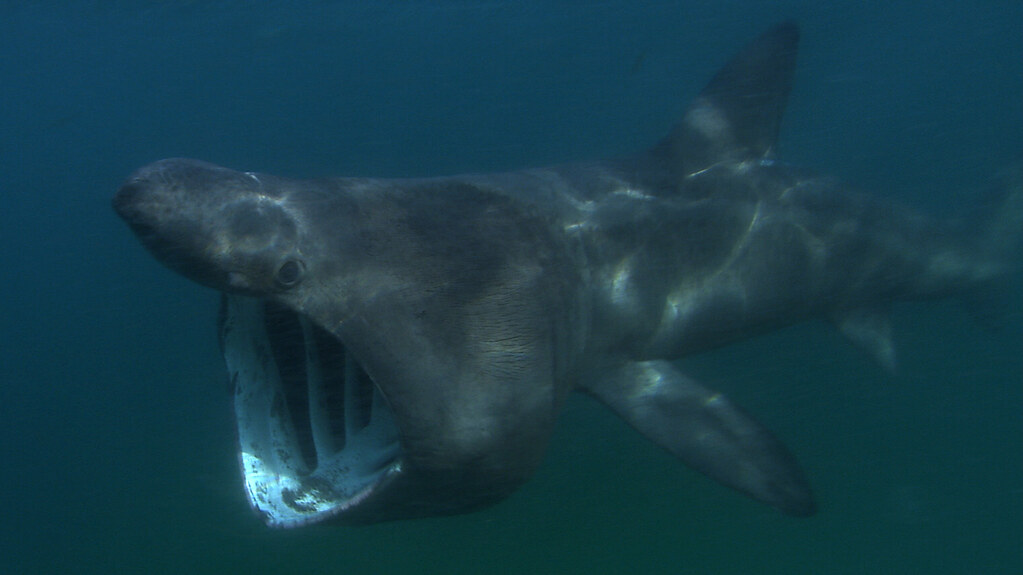Basking sharks are believed to be the second-largest species after the whale sharks. However, most sharks are giant-sized, and counting over 500 species is too difficult when you have such a large diversity of species. Even so, based on how big basking sharks are, we could determine whether or not they are the second-largest sharks.
The perception of sharks as giant-sized marine creatures stem from shark movies, not to mention their natural size. But as mentioned earlier, there are over 500 species, and they all come in different sizes and shapes.
A lot has been discussed already about the whale shark due to the fact that it is the largest of all species reaching a size of 60 feet or even longer than that. Check out how much the largest shark weight is?
What about the second-largest shark? Basking sharks are thought to be the second largest, but we still have to discover how big they are.
So, let’s cut to the chase and find out how large basking sharks are.
What is the Size of Basking Shark?
Sharks have different phases of life, and they grow in size as they get older. During its childhood, the basking shark measures between 4 and 6 feet in length, and in adulthood, it measures between 20 and 30 feet in length. However, it has been reported that basking sharks can reach a maximum length of more than 40 feet, making them the second-largest.
Take a closer look at what basking sharks eat, considering their size.
As you now know the size of this species as well as the fact that it is the second largest in terms of length, you would certainly like to learn more about the basking shark. Continue to read below and find out about the fascinating shark species, the basking shark.
An Overview of Basking Shark
A basking shark can reach a length of 40 feet, making it one of the largest marine animals. They are also called the “elephant shark” because of their wide, flat snout. They have a long, brownish body with a white underbelly and two dorsal fins, both of which are positioned near the tail.
As a consequence of their extremely large size, with large gaping mouths and an uncanny resemblance to white sharks, they are thought to be dangerous and would devour humans if they found the opportunity. However, it’s not like that. Just like whale sharks, basking sharks are not aggressive despite their size and intimidating appearance and are harmless to swimmers.
Moreover, in contrast to great white sharks, they move slowly and do not evade boats if they see them approaching.
Besides, they have a much smaller throat, so even if you get into their mouths, the shark wouldn’t be able to swallow you.
There are only a few shark species that consume plankton for part of their diet; basking sharks are one of them. Basking sharks filter water by raking their gills around, filtering zooplankton, very small fish, and invertebrates with their mouths open as they swim forwards.
Filter feeders, basking sharks have a mouth full of hundreds of small teeth. On the upper jaw, there are three to four rows of teeth, while six to seven rows are functional on the lower jaw.
Inhabiting the Atlantic and Pacific oceans, Basking sharks are often seen in the coastal areas of the world’s temperate oceans, and at times, they leap out of the water. Frequently visible at the surface, sharks follow the distribution of plankton in the water column and migrate seasonally.
As a result of overfishing and hunting of basking sharks for their fins, liver, meat, and oil, their population is declining so much so that the IUCN has declared the species endangered.
Are you aware that Basking sharks have massive livers that account for 25 percent of their body weight? Check out the more amazing facts here about sharks.
It is no secret that sharks are important to us, and if they go extinct, there will be total chaos, not only underwater but on the ground too.
What Do Basking Sharks Look Like?
The adult basking shark can grow to an average length of 30 feet or 9.1 meters. However, the young babies of basking sharks when born have an average length of 5 to 6.5 feet or 1.5 to 2 meters which are equal to the length of an adult Gray Reef shark. Furthermore, in 1851, basking sharks were spotted in the Bay of Fundy, Canada can have a maximum length of 40 feet or 12.3 meters. But the largest shark species of basking sharks ever recorded can grow to a length of 61.7 feet or 18 meters.
What Is the Weight of Basking Sharks?
The Basking shark – the second largest predatory creature of the ocean water can have an average weight of 10,260 pounds which is equal to 5 White sharks put together. Well, this is the weight of an adult Basking shark – you will be amazed when you know the weight of the largest species of Basking sharks. Interestingly, the largest species of basking sharks ever recorded can weigh more than 36,000 pounds which is equivalent to the weight of 7 species of largest White sharks.
Conclusion
We are always excited to see a new species of shark or fish in our waters, and basking sharks are no exception. They are easily spotted on the surface in search of plankton, and they are also one of the few species to be able to jump out of the water.
When it comes to size, we have seen that they are the second-largest species after the whale sharks, with an approximate length of 40 feet. Despite this, the basking shark is one of the few sharks that are not dangerous to humans. Check out the names of the dangerous species here.
Moving forward, sharks are amazing creatures living in the world long before us, the trees, and even the dinosaurs. It is crucial that you treat sharks with respect and not participate in anything that might lead to their extinction.







